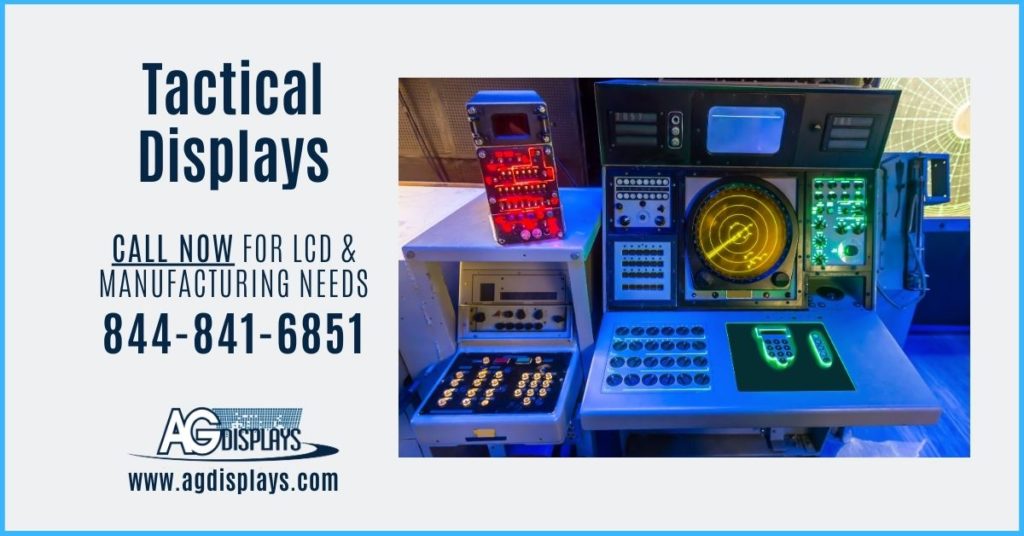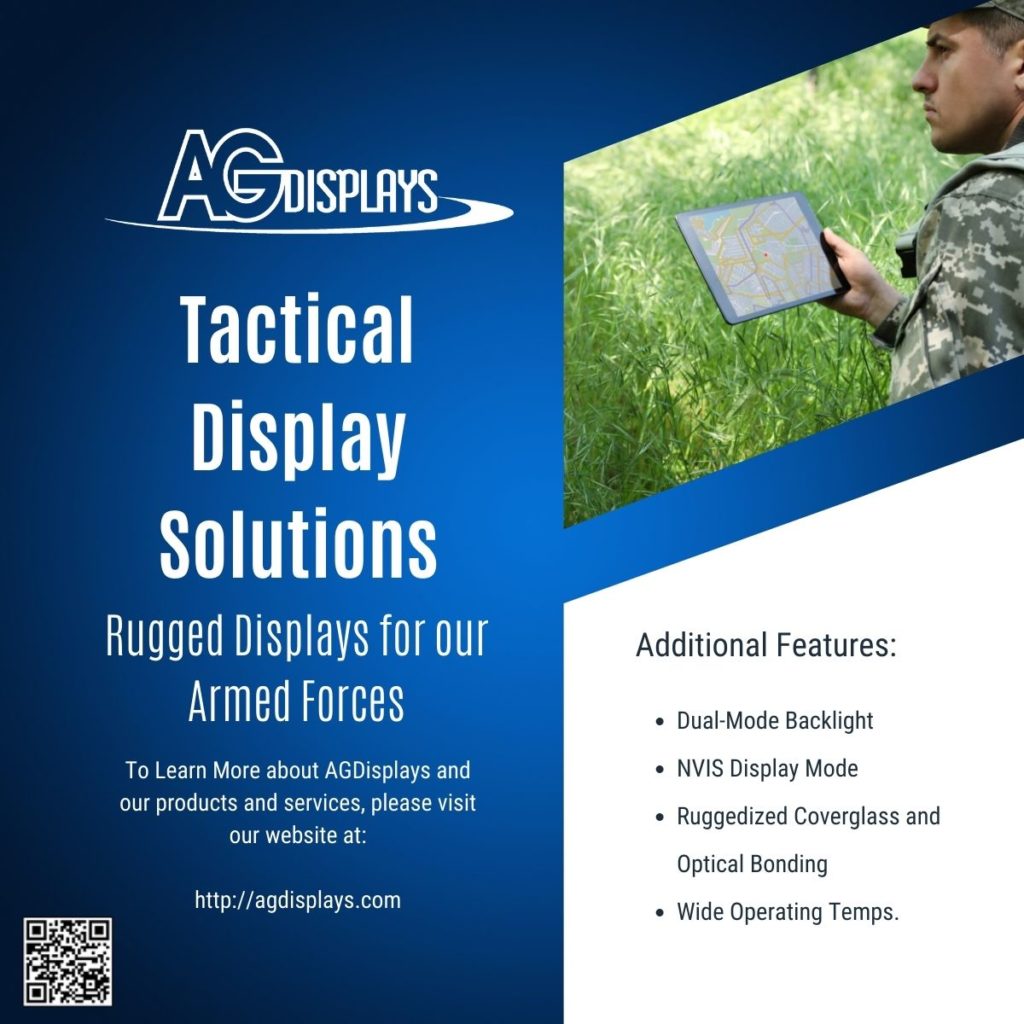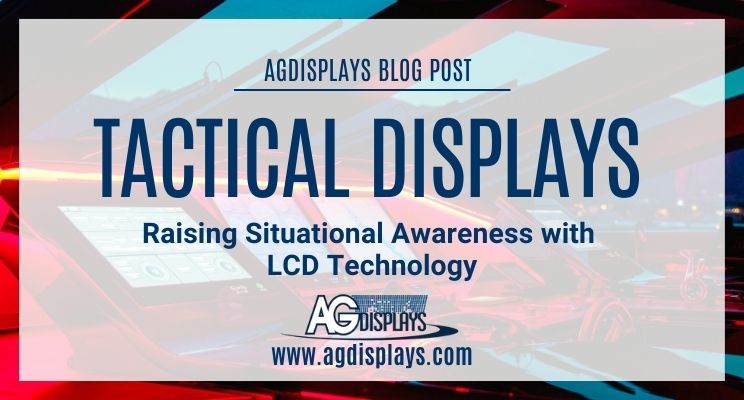Tactical display panels serve as indispensable components within modern military and defense systems, enabling real-time situational awareness, vital information distribution, and informed decision-making. These displays are designed to withstand demanding conditions while delivering high-quality images and reliable performance. AGDisplays is focused on the intricate technical aspects of tactical display panels, their distinctive features, underlying LCD technologies, and diverse applications within the LCD industry.
Understanding Tactical Display Panels
Tactical display panels are specifically engineered LCD panels that cater to the demanding requirements of military applications. These panels are designed to withstand harsh environmental conditions, including extreme temperatures, vibrations, and shock. By ensuring robust performance in critical situations, tactical display panels deliver clear visibility, enhanced readability, and rapid response times.

Key Features and Performance Parameters of Tactical Displays
Tactical display panels offer a plethora of unique features and performance parameters, differentiating them from conventional LCD panels. These noteworthy attributes include:
Rugged Construction
Tactical display panels are specifically designed to withstand extreme environmental conditions encountered in military operations. They are constructed with robust materials to resist shock, vibration, temperature variations, and moisture. Ruggedized features such as hardened glass, protective coatings, and reinforced frames ensure the displays can endure the rigors of combat and harsh outdoor settings.
High Brightness and Sunlight Readability
One of the critical requirements for tactical displays is high brightness and excellent sunlight readability. These panels employ advanced backlighting techniques, such as LED (Light Emitting Diode) technology, to achieve high luminance levels. Additionally, optical bonding techniques are employed to reduce the reflection of external light, enhancing visibility even in bright sunlight.
Wide Viewing Angles
Tactical situations often demand a wide viewing angle to ensure clear visibility from different positions. Advanced LCD technologies, such as In-Plane Switching (IPS) and Advanced Super In-Plane Switching (AS-IPS), enable wider viewing angles without compromising image quality. These technologies enhance the consistency of color, contrast, and image details, even when viewed from off-axis angles.
Night Vision Compatibility
In military operations, maintaining night vision capabilities is crucial. Tactical display panels incorporate compatibility with night vision goggles, allowing users to seamlessly transition between natural and enhanced vision modes. These displays employ specialized filters and coatings that preserve the integrity of the night vision image while providing optimal display performance during daylight operations.
Touchscreen Functionality
Many tactical display panels feature touchscreen functionality, allowing users to interact with the information displayed. Resistive and capacitive touch technologies are commonly used, enabling precise and responsive touch input even when wearing gloves or in challenging environmental conditions. Touchscreens enhance operational efficiency, enabling faster data input and intuitive control.
Customizable Interfaces
Tactical display panels can be tailored to specific operational needs, with customizable interfaces and controls. These displays often support multiple video inputs, including analog, digital, and high-definition signals. Additionally, they offer flexibility in terms of mounting options, with compatibility for various industry-standard mounting systems, ensuring seamless integration into military vehicles, aircraft, and command centers.
Advanced Display Management
To meet the demanding requirements of defense applications, tactical display panels incorporate advanced display management features. These include adaptive contrast and brightness control, temperature monitoring, power management, and automatic image adjustment capabilities. Such features optimize the display’s performance, extend its lifespan, and ensure reliable operation even in the most challenging scenarios.

LCD Technologies for Tactical Displays
Tactical display panels incorporate a range of LCD technologies to achieve optimal performance. The following technologies are commonly employed in this domain:
Twisted Nematic (TN) LCD
TN panels are renowned for their fast response times, making them suitable for applications that demand rapid image updates. However, they do have limitations in terms of viewing angles and color reproduction capabilities.
In-Plane Switching (IPS) LCD
IPS panels deliver wider viewing angles, superior color accuracy, and improved image quality compared to TN panels. As a result, they are widely preferred in tactical display panels to ensure optimal visibility from various positions.
Optical Bonding
Optical bonding is a technique employed to enhance display readability by eliminating air gaps between the LCD panel and the protective cover glass. This process effectively reduces internal reflections and improves overall ruggedness.

Applications of Tactical Display Panels
Tactical display panels find extensive applications in military and defense systems, including:
Command and Control Centers
Tactical displays are crucial components in command and control centers, offering real-time information and situational awareness to military personnel overseeing critical operations.
Combat Vehicles and Aircraft
Integrated into armored vehicles, fighter jets, and helicopters, tactical displays provide pilots, crew members, and soldiers with vital data, navigation information, and precise targeting assistance.
Surveillance and Reconnaissance
Tactical displays are integral to surveillance and reconnaissance systems, including unmanned aerial vehicles (UAVs) and ground-based sensors. They facilitate the relay of high-quality imagery and video feeds to operators.
Portable Devices
Tactical display panels are seamlessly integrated into handheld devices, such as ruggedized tablets and personal data assistants (PDAs). This empowers field operatives to access mission-critical information while on the move.

Future Trends and Developments
The field of tactical display panels continually evolves to meet emerging challenges and requirements. Some of the anticipated future trends and developments include:
Enhanced Durability
Ongoing research aims to further improve the ruggedness and durability of tactical displays, enabling them to withstand even more extreme environmental conditions.
Increased Integration
The integration of additional functionalities, such as augmented reality (AR) overlays, heads-up displays (HUDs), and advanced touch capabilities, is expected to enhance the usability and effectiveness of tactical displays.
Power Efficiency
Future tactical displays will focus on optimizing power consumption without compromising performance, resulting in extended battery life for portable devices.

Conclusion
Tactical display panels play a pivotal role in military and defense systems, providing vital information and situational awareness to personnel operating in demanding environments. By incorporating advanced LCD technologies, such as high-resolution screens, improved sunlight readability, and ruggedized designs, these panels ensure reliable performance in the most challenging circumstances. As the LCD industry continues to advance, tactical display panels will remain at the forefront of innovation, supporting military operations and safeguarding lives.
Read more About AGDisplays Tactical Display Services in our eBook: Military and Defense

